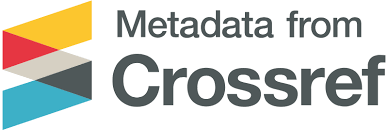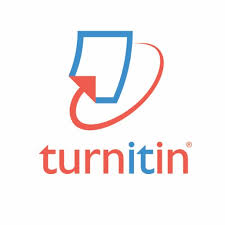IDENTIFICATION OF CONSTRUCTION SAFETY RISKS FOR IRRIGATION NETWORK PROJECT BASED ON THE WORK BREAKDOWN STRUCTURE (WBS) TO IMPROVE CONSTRUCTION SAFETY PERFORMANCE
DOI:
https://doi.org/10.35814/s7x16v93Keywords:
Work Breakdown Structure, Construction Safety, Irrigation Network, Risk Management, Safety PerformanceAbstract
The construction sector in Indonesia faces a high risk of occupational accidents, particularly in irrigation network projects. This study develops a standardized Work Breakdown Structure (WBS) for irrigation projects to improve safety performance. The WBS standard, detailed into 177 activities across five levels, enables precise identification of safety risks during project planning. Utilizing expert validation through the Delphi Method, 708 risk variables were identified, with 25 dominant risks grouped into three main categories: heavy equipment-related accidents (material lifting failures and traffic collisions) and electric shocks. This framework enhances the implementation of preventive measures and aligns safety management systems with construction activities. Findings reveal that material lifting failures with mobile cranes, traffic-related heavy equipment accidents, and electric shocks are the most significant risks. Integrating WBS-based safety planning during pre-construction improves project safety performance, reduces costs, and enhances sustainability. This research highlights the critical need for comprehensive safety strategies tailored to irrigation projects.
References
Asiyanto. (2006). Metode Konstruksi Dewatering. Jakarta: UI-Press.
Bortey, L., Edwards, D. J., Roberts, C., & Rillie, I. (2022). A Review of Safety Risk Theories and Models and The Development of a Digital Highway Construction Safety Risk Model. Digital, 206-223.
Choi, W., Kim, K., & Jung, W. (2024). A Mini Review (PRISMA) on Causes of Incidents and Injuries Occurring in Agricultural Workplaces. Agriculture, 1-15.
Fernandez-Muniz, B., Montes-Peon, J. M., & Vasquez-Ordas, C. J. (2014). Safety Leadership, Risk Management, and Safety Performance in Spanish Firms. Safety Science, Vol. 70, 295-307.
Hinze, J., Pedersen, C., & Fredley, J. (1998). Identifying Root Causes of Construction Injuries. Journal of Construction Engineering and Management, 67-71.
International Labour Organization. (2011). ILO Introductory Report : Global Trends and Challenges on Occupational Safety and Health. Turin: ILO.
James, J., Ikuma, L. H., Nahmens, I., & Aghazadeh, F. (2012). Influence of Lean on Safety Risk Exposure in Modular Homebuilding. Industrial and Systems Engineering Research Conference.
Kim, S., & Kang, C. (2022). Analysis of the Complex Causes of Death Accidents Due to Mobile Cranes Using a Modified MEPS Method : Focusing on South Korea. Sustainability, 1-18.
Li, Y., & Guldenmund, F. W. (2018). Safety Management System : A Broad Overview of The Literature. Safety Science, 94-123.
Manik, K., Putri, O. N., Azzahra, S. F., Anda, M., Juliastuti, & Wijayanti, Y. (2021). Sustainability in Construction Work : A Perspective on Accidents and Building Failure Mitigation in Indonesia. IOP Conference Series : Earth and Environmental Science, 1-9.
McGraw Hill Construction. (2013). Safety Management in The Construction Industry : Identifying Risks and Reducing Accidents to Improve Site Productivity and Project ROI. Bedford: McGraw Hill.
Melagoda, D. G., & Rowlinson, S. (2022). The Institutional Framework of Construction Safety Management : A Case Study of Sri Lanka. IOP Conference Series : Earth and Environmental Science.
Mesaros, P., Spisakova, M., & Mackova, D. (2019). Analysis of Safety Risks on The Construction Site. IOP Conference Series : Earth and Environmental Science.
Ministry of Manpower of the Republic of Indonesia. (2022). Profil Keselamatan Kerja Nasional Indonesia Tahun 2022. Jakarta: MoM.
Ministry of Public Works and Housing of the Republic of Indonesia. (2013). Standar Perencanaan Irigasi. Jakarta: MPWH.
Ministry of Public Works and Housing of the Republic of Indonesia. (2013). Standar Perencanaan Irigasi. Jakarta: PUPR.
Ministry of Public Works and Housing of the Republic of Indonesia. (2021). Public Works and Housing Ministerial Regulations No. 10 of 2021 on Construction Safety Management System Guidelines. Jakarta: MPWH.
Ministry of State Secretariat of the Republic of Indonesia. (2006). Govenrnment Regulation of the Republic of Indonesia No. 20 of 2006 on Irrigation. Jakarta: State Secretariat.
Project Management Institute. (2017). A Guide to The Project Management Body of Knowledge (PMBOK Guide). Pennsylvania: PMI.
Rad, P. F. (1999). Advocating a Deliverable-Oriented Work Breakdown Structure. Cost Engineering, 35-39.
Saleh, J. H., Saltmarsh, E. A., Favaro, F. M., & Brevault, L. (2013). Accident Precursors, Near Misses, and Warning Signs : Critical Review and Formal Definitions Within The Framework of Discrete Event Systems. Reliability Engineering and System Safety, 148-154.
Schoonwinkel, S., Fourie, C. J., & Conradie, P. D. (2016). A Risk and Cost Management Analysis for Changes During The Construction Phase of A Project. Journal of The South African Institution of Civil Engineering, 21-28.
Statistics Indonesia. (2022). Quarterly Gross Domestic Product of Indonesia. Jakarta: Statistics Indonesia.
Tamara, A. (2019). Development of Safety Plan to Improve OHS (Occupational Health and Safety) Performance for Construction of Channel Irrigation Based on WBS (Work Breakdown Structure). Depok: UI.
van Tonder, J. C., & Bekker, M. C. (2002). Analysis of a Methodology to Obtain a Work Breakdown Structure Built Up form Interdependent Key Project Deliverable Packages. African Rhythm Project Management Conference. Johannesburg: Project Management Institute of South Africa.
Veteto, C. E. (1994). The Relationship Between Planning and Safety. Cost Engineering.
Zhu, Z., Yuan, J., Shao, Qiuhu, Zhang, L., & Wang, G. (2020). Developing Key Safety Management Factors for Construction Projects in China : A Resilienve Perspective. International Journal of Environmental Research and Public Health.
Downloads
Published
Issue
Section
License
Copyright (c) 2025 Jurnal Infrastruktur

This work is licensed under a Creative Commons Attribution-NonCommercial-ShareAlike 4.0 International License.














